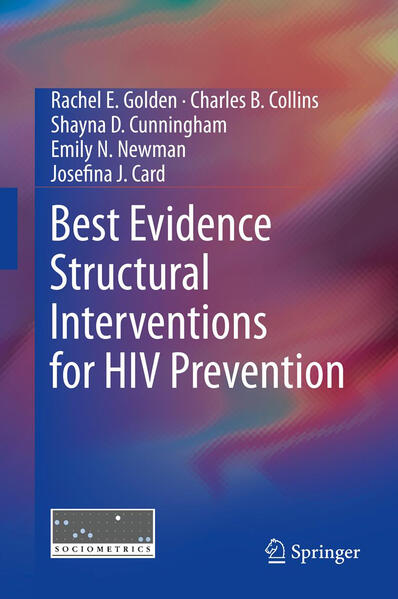
Inhaltsverzeichnis
Introduction. - Chapter 1. Overview of Interventions to Decrease Injection Drug Use Risk. - Case Study 1 Legalization of Needle and Syringe Sale and Possession:Effect on Connecticut Injection Drug Users Injection Practices. - Case Study 2 The SHAKTI Intervention in Bangladesh:(Stopping HIV/AIDS through Knowledge and Training Initiatives)A Needle Exchange Program s Effect on Injection Drug Users Injection. - Case Study3 Providing a Safer Injection Facility to Injection Drug Users: InSite: A Safer Injection Facility in Vancouver, British Columbia. - Case Study 4 Needle Social Marketing Strategy in China: Effect on Chinese Injection Drug Users Injection Practices. - Case Study 5 The Vietnam and China Cross-Border Project: Effect on HIV Risk Behaviors of Injection Drug Users. - Chapter 2 History and Politics of Structural Change to Reduce HIV Due to Non-Commercial Sex Risk. - Case Study 6 Louisiana s Condom Social Marketing Program: Effect of Improved Availability and Access on Use. - Case Study 7 Promoting Sexual Responsibility Among Youth in Zimbabwe: Effect of an Extensive Multimedia Campaign on Indicators of Safer Sex. - Case Study 8 The 100% Jeune Social Marketing Campaign: Effect on Condom Use among Youth in Cameroon. - Case Study 9 Twenda na Wakati (Lets Go with the Times):Effects of a Radio Soap Opera on HIV/AIDS Prevention in Tanzania. - Case Study 10 A Safer Sex Media Campaign in Lexington, Kentucky: Using Public Service Announcements to Promote Condom Use. - Chapter 3 Overview of Structural Interventions to Decrease Commercial Sex Risk. - Case Study 11 Mandatory Condom Law in Nevada Brothels: Using Policy to Change Condom Use Practices. - Case Study 12 Compromiso Collectivo: Reducing HIV Risk among Female Sex Workers in the Dominican Republic. - Case Study 13 A Social and Structural Intervention in the Philippines: Effect on Condom Use of Establishment-Based Female Sex Workers. - Case Study 14 The 100% Condom Program inThailand: Using Public Policy Change to Increase Condom Use in Brothels. - Case Study 15 The Sonagachi Project: Empowering Sex Workers in the Songagchi District of Calcutta, India. - Chapter 4 Overview of Structural Interventions to Increase Voluntary Counseling and Testing(VCT) and Antiretroviral Therapy (ART). - Case Study 16 Mandatory Offering of HIV Screening during Prenatal Visits: The Experience of Southeastern France in Response to National Policy. - Case Study 17 Free Highly Active Antiretroviral Therapy in Taiwan: Effect of a Country-Wide Policy on HIV Transmission. - Case Study 18 A Drama-Based HIV Intervention in South Africa: Effect on Voluntary Counseling and Testing. - Conclusion.
Produktdetails
Entdecken Sie mehr
Pressestimmen
From the reviews:
This volume, which details the evidence for structural interventions, is a resource to service providers, planners, policy makers, and funders. of interest to academics, nongovernmental organization workers, policy makers, economists, and others interested in addressing the HIV pandemic at a population level. As a reference for practitioners in HIV prevention, this volume should be a first port of call. It is an important contribution to the field. (Ashraf Kagee, PsycCRITIQUES, Vol. 59 (11), March, 2014)
Bewertungen
Es wurden noch keine Bewertungen abgegeben. Schreiben Sie die erste Bewertung zu "Best Evidence Structural Interventions for HIV Prevention" und helfen Sie damit anderen bei der Kaufentscheidung.










